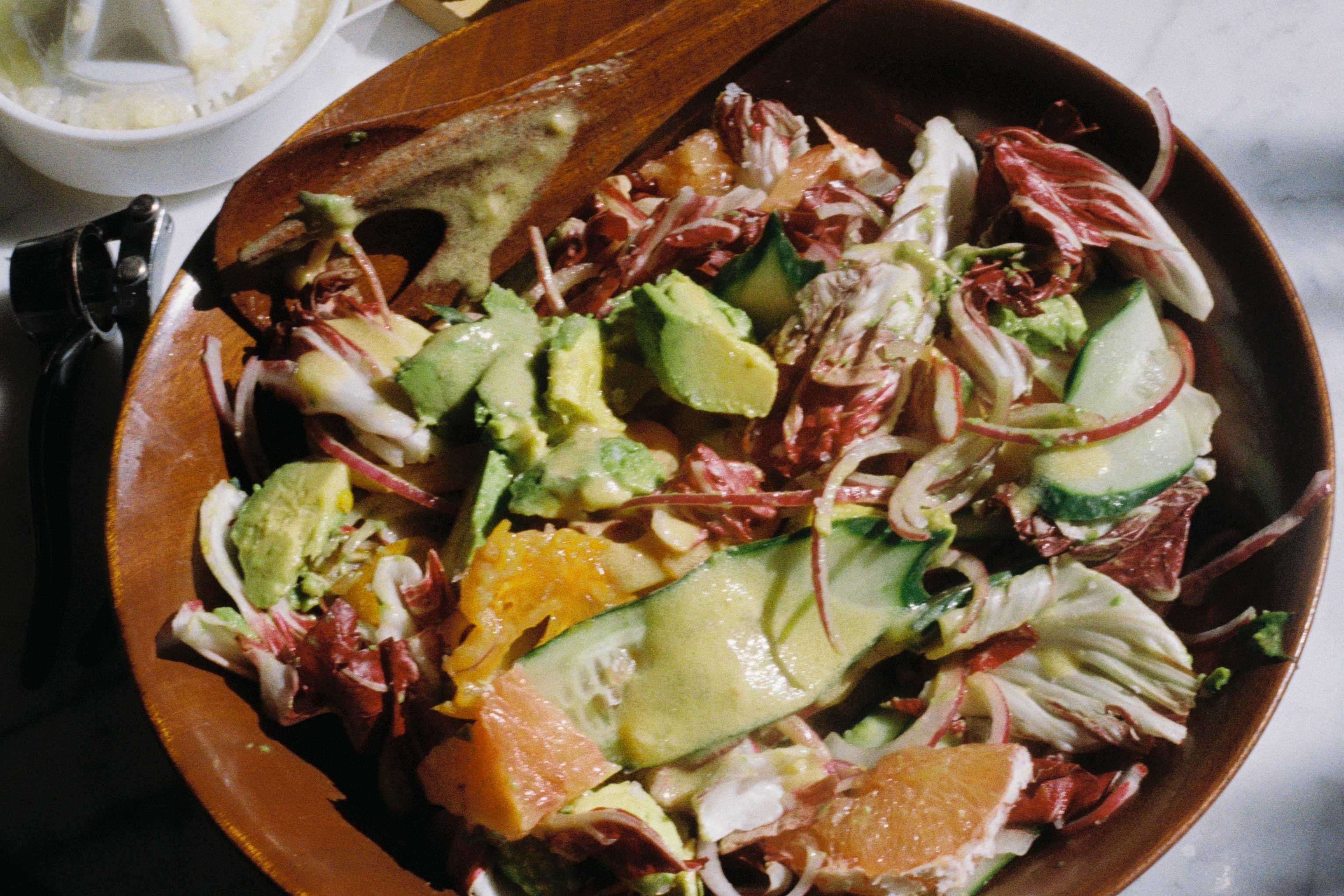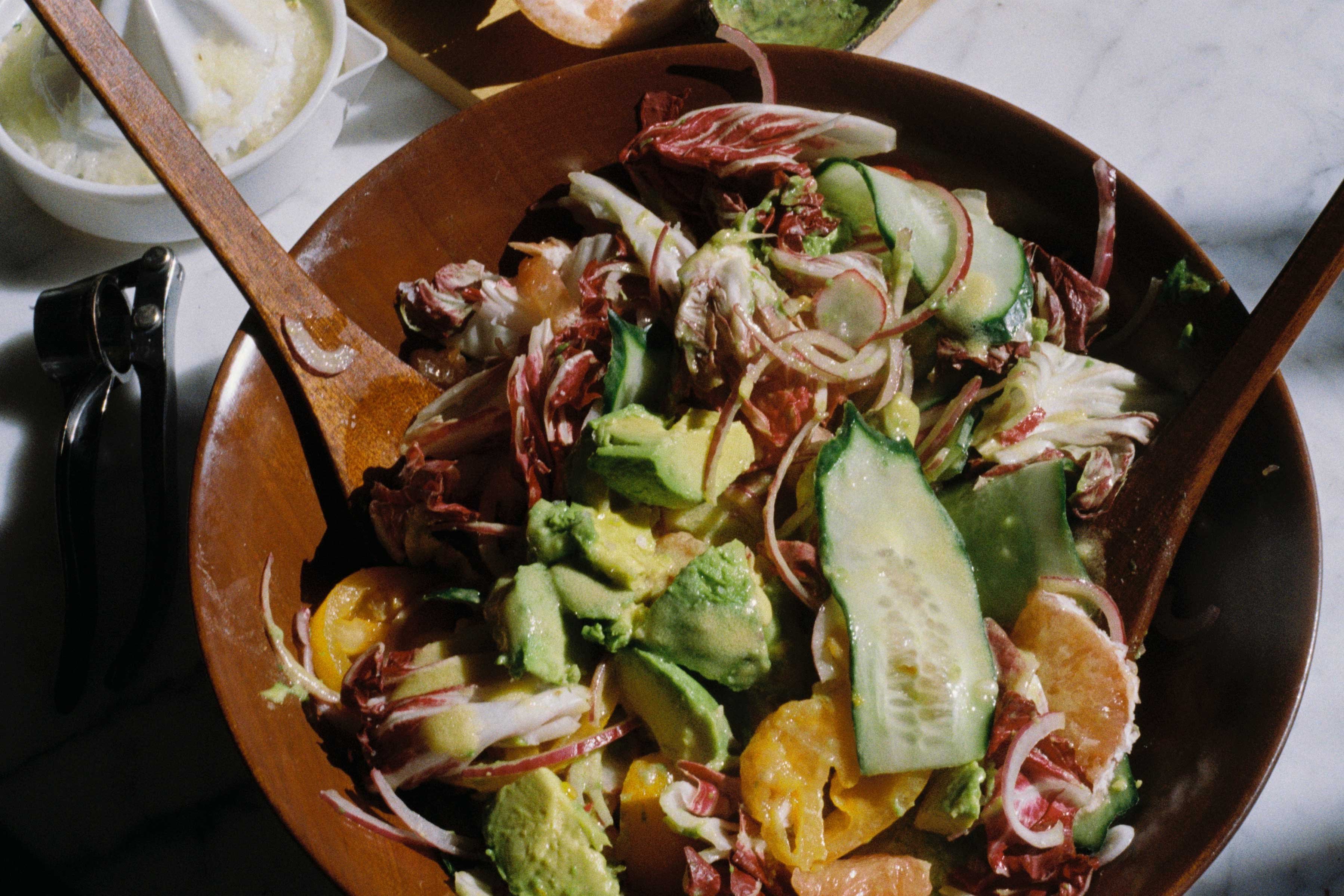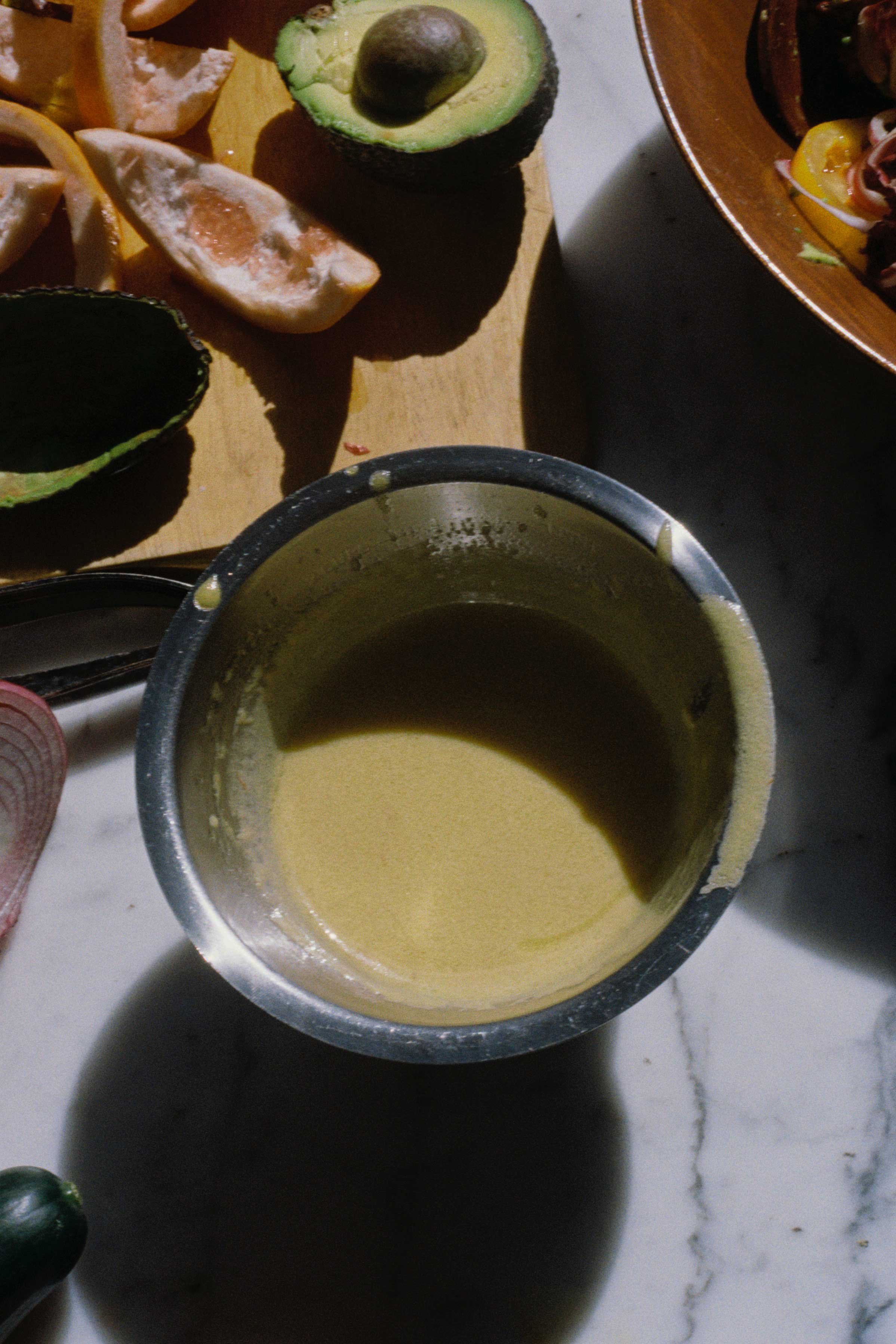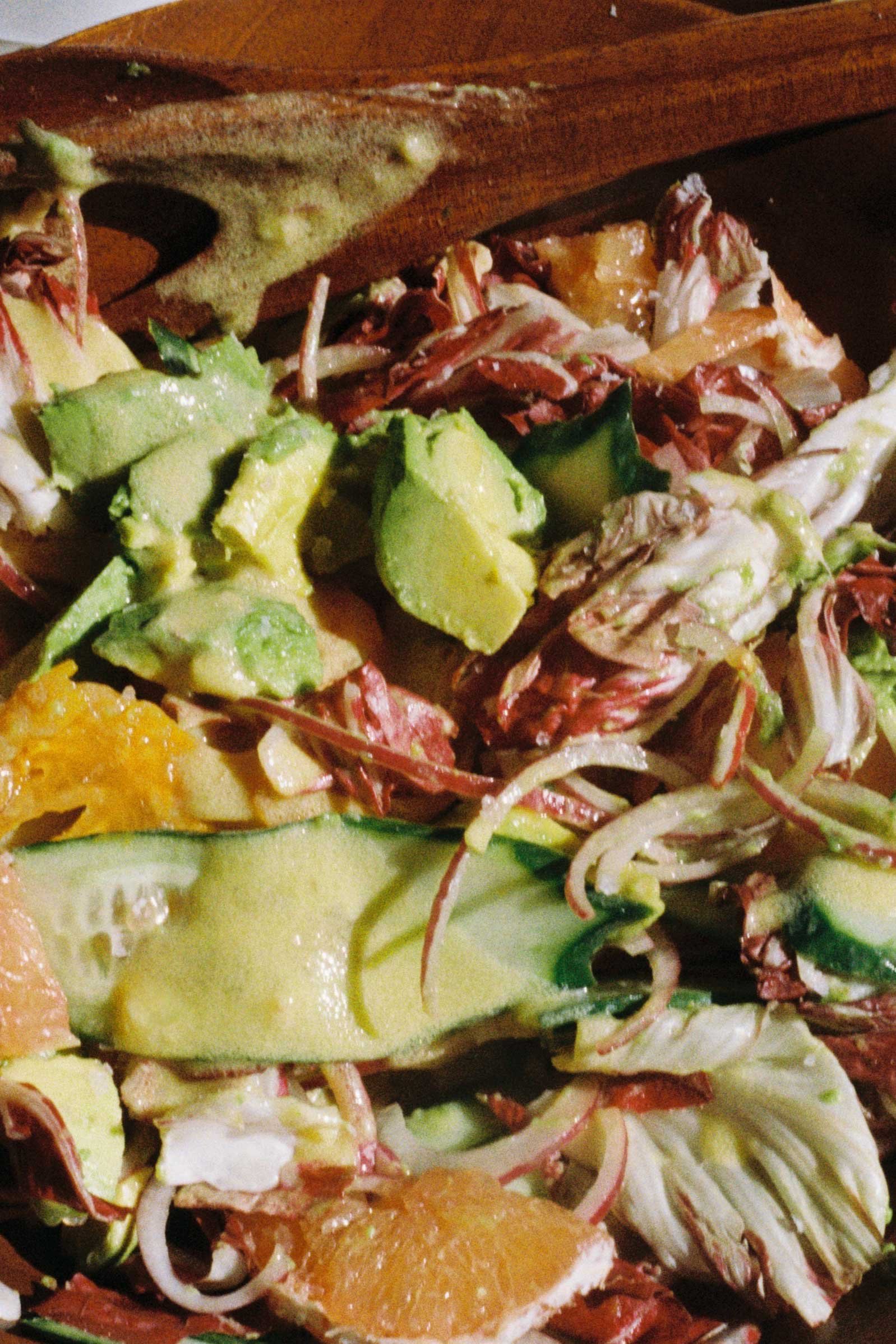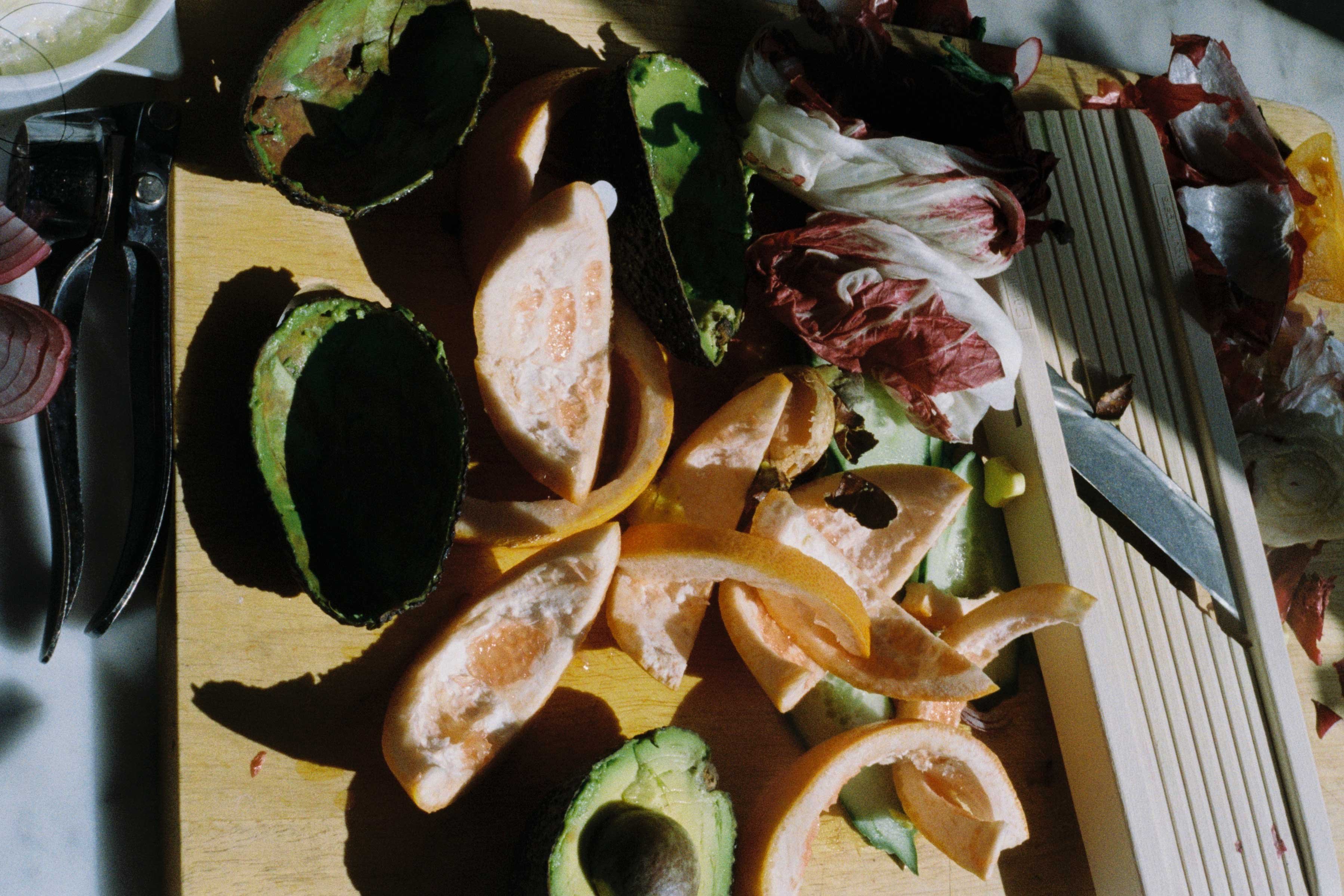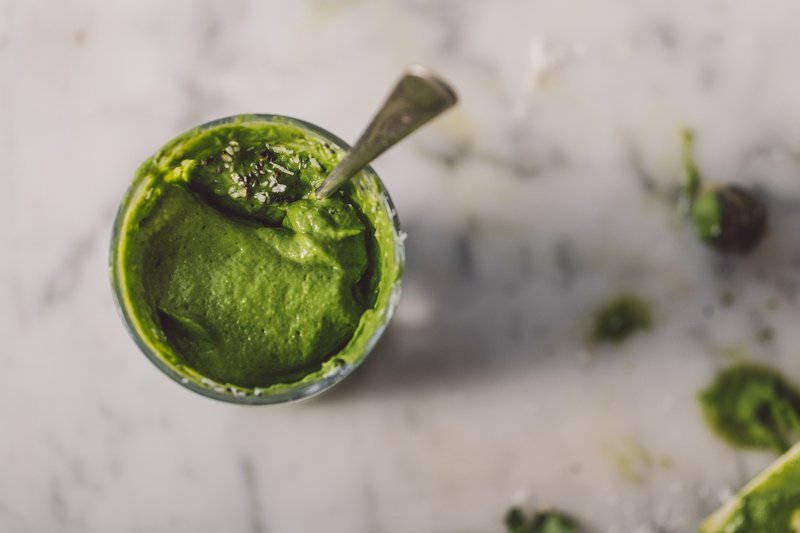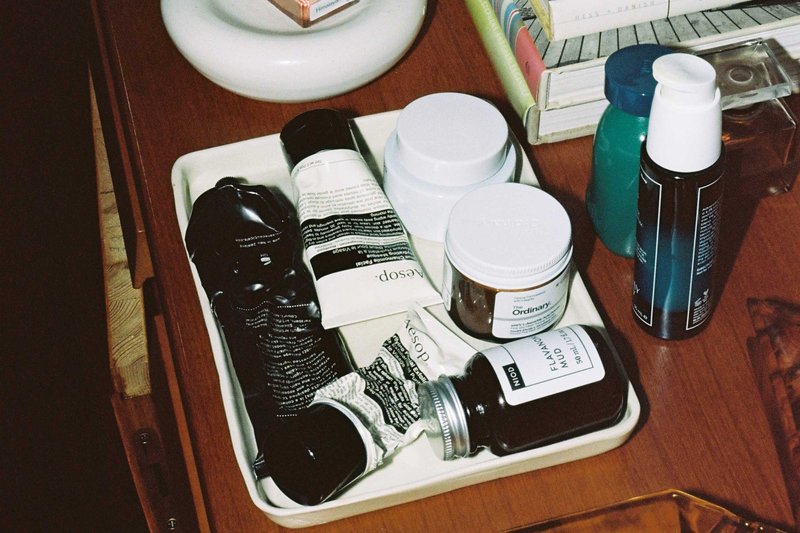The transcendent quality of simple ingredients, prepared with attention and care, encourages us to choose the best and let the ingredients speak for themselves. Giant salads at dinnertime alkalise our system and cool us down from the inside out, flush the body of toxins and hydrate our systems, which is vital—our bodies are 60 per cent water, and every aspect of your health will benefit. Including your skin. Here, I am celebrating the vibrancy of our summer season. Ribbons of cucumber, juicy heirloom tomatoes, red onion, citrus, radicchio, radish and avocado are tossed with a simple dressing of olive oil and ginger kombucha. Adapt the ingredients to your regionality. I served this substantial mineral-rich salad alongside baked potatoes, and I have enjoyed it on other occasions. This is one salad that helps me feel my most hydrated.
Unlocking seamless digestion and achieving clear [or clearer] skin
As a hormonal acne sufferer, I understand controlling breakouts can be challenging. Root causes for acne vary from person to person, but imbalanced insulin and blood sugar levels, gut dysbiosis and poor digestion further complicate the problem and more often than not, multiple imbalances are going on simultaneously. Inefficient liver detoxification and dysregulated hormones, especially estrogen and progesterone imbalances and high levels of androgens, also contribute to acne. And don't forget stress can be a huge contributing factor.
Acne that is gut-related tends to show up on the forehead, temples and eyebrows. Irregular bowel movements, how well our elimination organs get rid of waste, and gut dysbiosis (gut infections and an absence of proper beneficial gut bacterias) can contribute to acne. Adequate blood levels of vitamins A, B-complex and magnesium can sometimes remedy digestive issues. A slight deficiency in these nutrients can mimic different digestive disorders. It’s not what you eat; it's what you absorb. If you have digestive issues, these nutrient deficiencies should be on your radar immediately.
